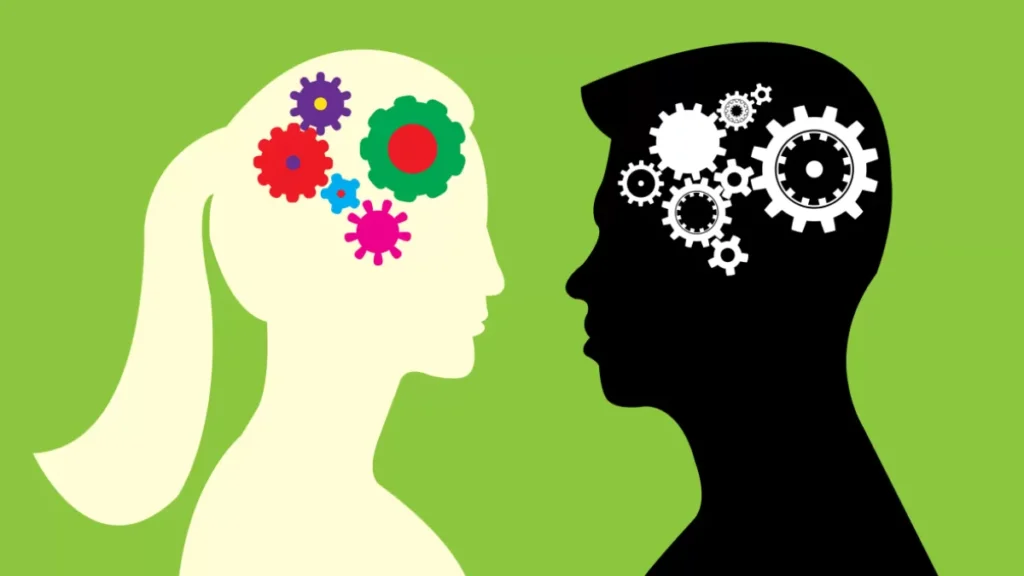THE INTRIGUING DICHOTOMY OF GENDER: CELEBRATING STRENGHTS AND EMBRACING DIFFERENCES

In a world that often highlights differences between genders, it can be easy to overlook the inherent blessings and unique strengths that both men and women bring to the table.
The recent playful exchange between a woman and a man, with its underlying themes of gender equality and individual capability, serves as a microcosm of a larger conversation about gender roles, abilities, and societal expectations.
In this humorous yet enlightening scenario, we find an opportunity to reflect on the strengths that both genders possess and the potential for collaboration and mutual respect.
The playful banter that unfolded between the man and the woman reveals a common societal tendency to perceive gender roles within a rigid framework.
The man’s initial skepticism of the woman’s assertion, “A woman can do what a man can do—if not more,” reflects traditional attitudes that often undervalue what women can achieve.
However, the woman’s confident stance highlights the need for reevaluating these perceptions, recognizing that capability is not confined to gender but is an individual trait influenced by experience, skill, and determination.
While the banter was lighthearted, it touches on the serious implications of gender dynamics in society. The woman, who sees herself as equally capable, is challenged by the societal lens through which men and women are often viewed.
Conversely, the man’s bravado masks a deeper truth—while his physical ability may be hampered by a deformed hand, he demonstrates unexpected strength, providing a vivid illustration that prowess extends beyond conventional notions of masculinity.
The incident with the sack of grains brings to light the beauty of cooperation and the blessings that arise from acknowledging each other’s strengths and weaknesses. The woman’s struggle to lift the heavy sack, despite her self-sufficiency, reminds us that strength is not solely about physical capabilities.
Similarly, the man’s display of strength, despite his physical limitations, emphasizes that every individual contributes uniquely to the tapestry of human experience.
This narrative invites us to explore the concept of gender not as a strict dichotomy of “male” versus “female” but as a spectrum where both genders can collaborate and complement each other. Each person, regardless of gender, brings unique advantages that can enhance teamwork.
For instance, women may excel in nurturing and emotional intelligence, while men may have attributes that lean towards assertiveness and physical resilience. By acknowledging and embracing these differences, society can foster environments where collaboration thrives rather than competition.
The need for reform in the perception of gender roles is urgent. Unfortunately, societal norms, often reinforced through cultural narratives, perpetuate a binary view of gender capabilities.
However, recent movements advocating for gender equality are slowly shifting these narratives, proving that both men and women can challenge traditional expectations.
For example, the growing number of women in leadership positions across various fields signifies a shift towards recognizing the capability of women as key players in decision-making processes.
Simultaneously, movements advocating for men’s mental health and vulnerability are challenging the restrictive norms of masculinity that discourage emotional expression.
The story encapsulates a broader reality seen in workplaces, sports, academia, and households. Consider the way in which male and female athletes come together in mixed-gender sports, showcasing how each gender brings unique skills to the team. Collaborations between genders have led to significant advancements in various fields, from science and medicine to the arts and technology.
In the business world, companies that embrace diversity and gender equality often report higher productivity and creativity. For example, research by McKinsey & Company indicates that organizations with higher gender diversity are 21% more likely to outperform their peers in profitability. These findings highlight the power of combining the strengths of different genders to achieve common goals.
The playful encounter between the man and the woman serves as a reminder to embrace the dichotomy of gender not as a source of competition but as an opportunity for collaboration.
By recognizing and celebrating the unique strengths that each gender brings, we can work toward a society where both men and women are valued equally, contributing their abilities to a shared purpose.
In redefining our understanding of gender, we move closer to a world where cooperation supersedes competition, and individuals—regardless of gender—can thrive together. The beauty of humanity lies not in our differences but in our shared strengths, challenges, and the possibilities that arise when we choose to work together, embracing both our unique traits and common goals.
Ultimately, when we celebrate the intricate dance of strengths, weakness, and collaboration, we create a brighter future for all.




